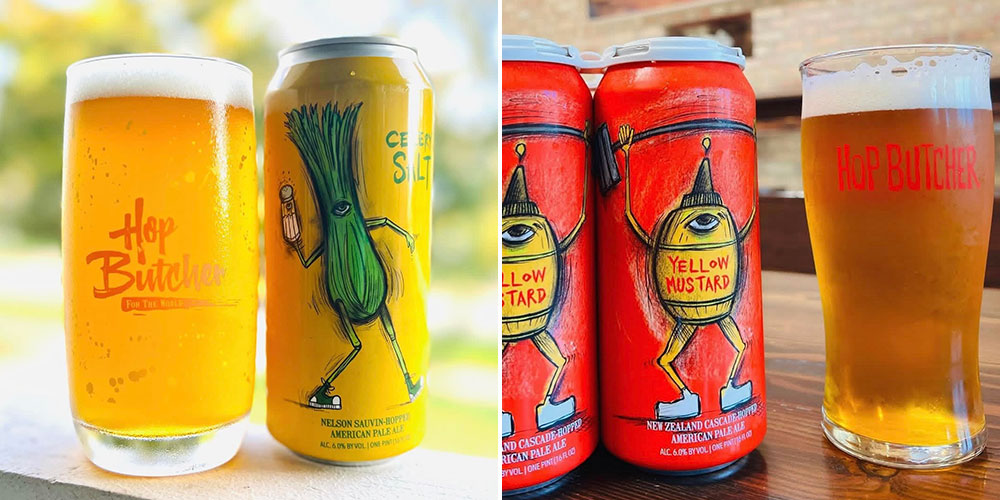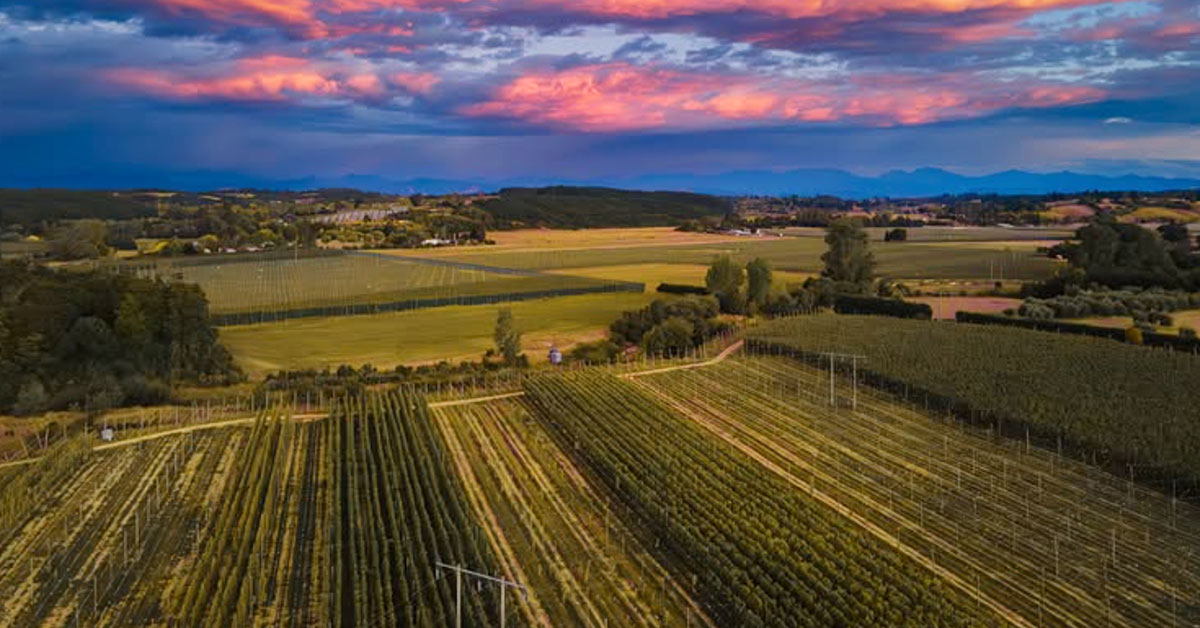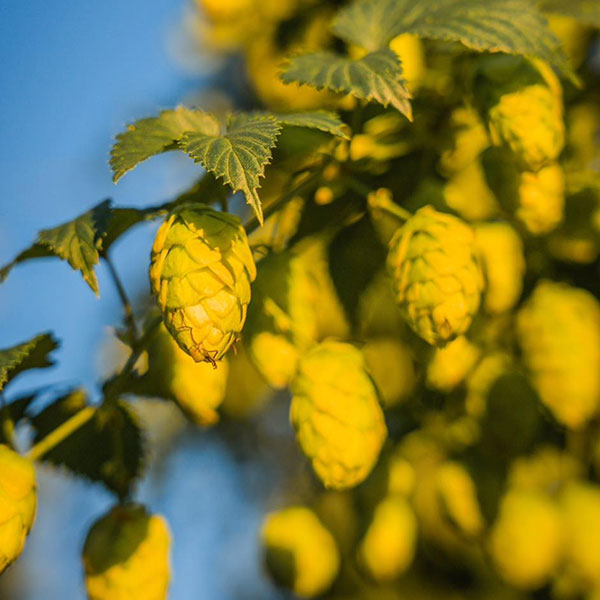Terroir. The term synonymous with French wine’s appellation d’origine contrôlée but largely absent from craft beer’s lexicon is seldom spoken in the beer bars where hop heads and malt aficionados gather. Directly translated to “taste of place,” terroir is founded in the principle of agricultural singularity, refined via nomenclature and technical appreciation of the farming that composes the backbone of winemaking.
But craft beer has due claim to terroir; malt, yeast, and water live in agricultural abundance, delivering the unique flavors and aromas of the source to a finished product. Hops are most particularly terroir driven. Citra grown in the Yakima Valley evokes the lush, ranging hills of Southern Washington while Saaz, most commonly grown in the Czech Republic, transports drinkers to the Bohemian greenscapes where Pilsners were first sipped.
Today, there is no family of hops more in vogue than those coming from New Zealand. Pull the tab on an ale hopped with Riwaka, Nelson, or Motueka and even those uninitiated in olfactory evaluation can sense something unique with the application of NZ hops.
“New Zealand has a catalog of higher intensity hops—not just Nelson and Motueka, but Riwaka, Peacharine, Nectaron, and Pacific Sunrise—that deliver in the same way as American hops,” says Jude La Rose, owner of Hop Butcher, a Chicago-based brewery acclaimed for its hop-forward brews. “They deliver on citrus, they deliver on tropical, and then they get into this cool-climate wine character. There’s something terroir-driven that I’ll be able to pick out.”

The Rise of NZ Hops
New Zealand hops came into prominence in the American craft beer scene with the release of Alpine Beer Co.’s rye IPA, Nelson, aptly named after the hop originating from the eponymous town in New Zealand’s hop-producing Moutere Valley. Nelson Sauvin hops are instantly recognizable, with a pungent, grassy character reminiscent of cool climate Sauvignon Blanc, hence Sauvin. This white grape quality is often the first descriptor used to characterize the aroma of NZ hops.

Motueka, named after a town just north of Nelson, shares this distinctive white grape character while bringing notes of candied lime and blueberries to the party. Newer cultivars such as Nectaron, Peacharine, and Superdelic are similarly sought after for their own unique aromatic expression of the region.
Of these cultivars, the elusive Riwaka is perhaps the most exciting, prized for its dank-grassy and bright, pink grapefruit aromatics. Of Riwaka growers, there is perhaps none more dedicated than Eggers Hops, an independent hop farm run by sixth-generation hop grower Kem Eggers. Located in the upper Moutere Valley, Eggers creates distinction amongst a lean selection of varietals via immense harvest windows, producing early and late selections that could be mistaken for different hops altogether.
“It comes down to the harvest window and what can be done between early selection vs. late selection,” Eggers explains. “In the past, hops have been homogenous, blended. What we’re doing is harvesting, kilning, and processing quickly into pelletizing and we’re not blending—we’re segregating our lots by harvest date and block.”
These distinctions amidst lot and harvest date have allowed Eggers to apply the principles of time and appellation seen in winemaking to hop cultivation. As a result, brewers have an unprecedented level of specificity when making selections. The best example of this can be seen in Eggers Special, a select harvest of Riwaka hops determined by Eggers to be the finest on the farm. The uniqueness of this selection, stemming from the precise timeframe and location from where these hops were picked, has gained immense praise from brewers.

“Some of the Riwaka that I got from him is actually so late harvest that the pellets are yellow because they are so incredibly overripe,” says Adam Rosenthal, brewer and owner of New York’s Wayward Lane Brewing. “When you smell these [pellets], you think ‘Holy shit. Intensity on a whole other level.’”
Dialing It In
New Zealand’s climate and geographic protection are a hop grower’s dream, giving them the freedom to extend harvest windows and allow hops to develop their signature character. Cool summer growing seasons encourage the production of alpha acids within hops while protecting them from developing less desirable late-harvest flavors such as onion and garlic.
New Zealand’s isolation is another strength.”Being an island nation, very cut off from the rest of the world, their hops just haven’t really developed disease in the same way [as other hop-growing regions]. They have a huge advantage in that they can grow more organically because they’re not dealing with the same kinds of pests,” says Rosenthal.
This lack of disease pressure has allowed New Zealand to use sustainable methodology, implementing low-intervention techniques on their farms en route to becoming the largest organic hop producer in the world. Rather than relying on tractor mowers, swaths of sheep flocking bine-to-bine is a common sight amongst New Zealand hop yards, as the sheep naturally defoliate the bases of bines and graze on the cover crops planted amidst the trellises, which in turn assists in ensuring consistent soil structure, nutrient cycling, and water filtration. Low-emission hot water radiators are used to kiln hops before pelletization, preserving flavor and ensuring shelf stability. Even the most infamous pest present in NZ hop farms, the two spotted mite, is naturally remedied by the introduction of a second, predatory mite that feeds on its two spotted cousin.

U.S. brewers have found unique applications for New Zealand hops and a causal relationship has formed between the progression in brewing techniques and the advent of advanced NZ hop products. Brewers have begun to push the limits of flavor with these products, using them in conjunction with standard hop pellets to create more aromatic hoppy beers. Due to its neutral yeast profile and sturdy malt backbone, IPA has become the primary laboratory for these forays into hop saturation, particularly those of the hazy variety.
“Since their application worked so well, it allowed hazy IPA to continue to develop and push further. Take a look at all the advanced hop products—they show that there was a market for these hops in T-90 [pellet] form and now concentrated versions [of these hop products] continue to saturate and push flavor,” said La Rose. “The bar was raised.”
These hop extracts are based in the process of cryogenically freezing and isolating lupulin, a powdery substance found in the yellow glands of the hop cone. These lupulin isolates offer brewers a concentration of alpha acids and essential oils, which enhance aroma while reducing loss, as the products contain no rough plant material. Products like Cryo Hops®, Hyperboost from Yakima Chief, and SubZero Hop Kief from Freestyle Hops have taken the market by storm. Seeing New Zealand hops being used for these hop extracts is a game changer in the world of hoppy beer. “We’ve loved playing with different varieties [of these products] and [Freestyle] is one of the only producers that actually gives you lot-specific extracts,” says Rosenthal.
As craft beer continues to evolve, this lot specificity and technical advancement—not just with hops but with malt, yeast, and water—is the through line to the terroir that defines the beverage. Growers like Kem Eggers and brewers such as Rosenthal and La Rose offer a portal to a world thousands of miles away via the terroir that they tap into on a daily basis. While New Zealand cultivars have already left an imprint on U.S. craft beers present and future, the surface has barely been scratched.
“I don’t believe the majority of U.S. [brewers] have actually experienced the variety of New Zealand cultivars,” said Eggers. “They haven’t experienced the possibility of, say, Nelson and the variants out there. There’s a lot of room for Nelson, Motueka, and others [to grow in the U.S. market].Our challenge is to get more NZ hops in the U.S. craft beer scene and educate brewers and consumers.”
Fred Cullin is an administrator and bartender at Brooklyn’s premier vinyl listening bar, Bierwax. He has over eight years of industry experience in brewing, wine production, bartending and service.
CraftBeer.com is fully dedicated to small and independent U.S. breweries. We are published by the Brewers Association, the not-for-profit trade group dedicated to promoting and protecting America’s small and independent craft brewers. Stories and opinions shared on CraftBeer.com do not imply endorsement by or positions taken by the Brewers Association or its members.






